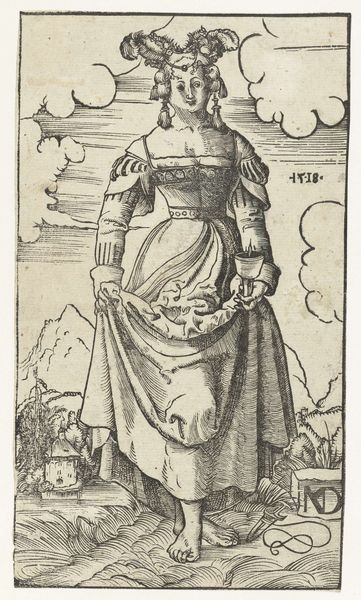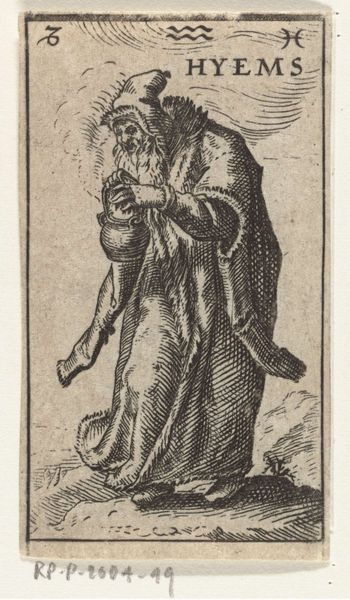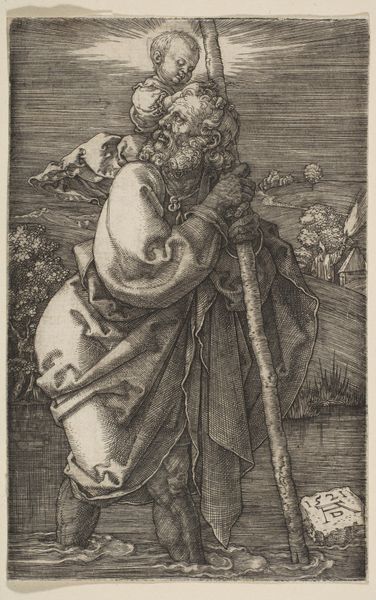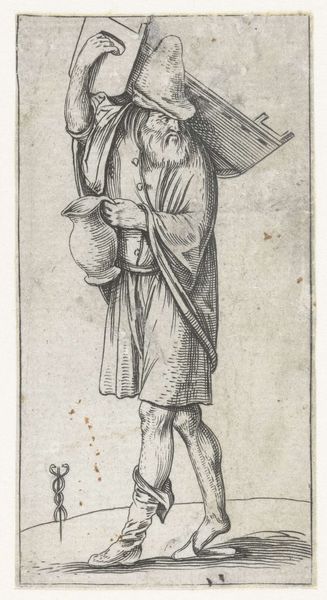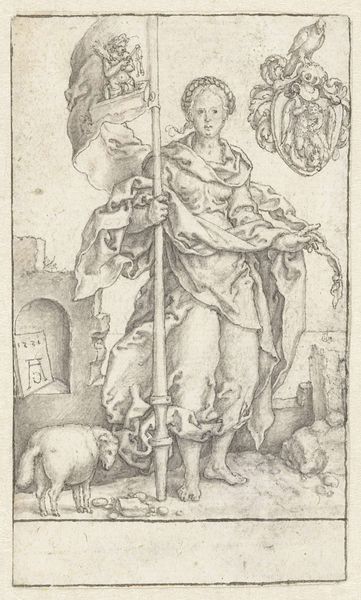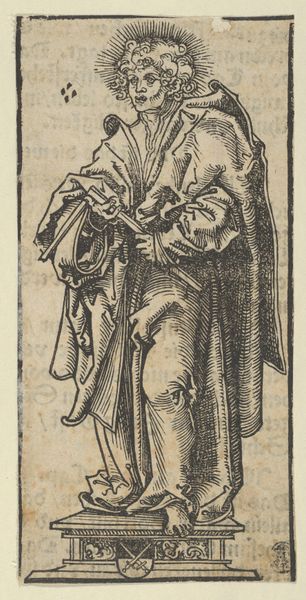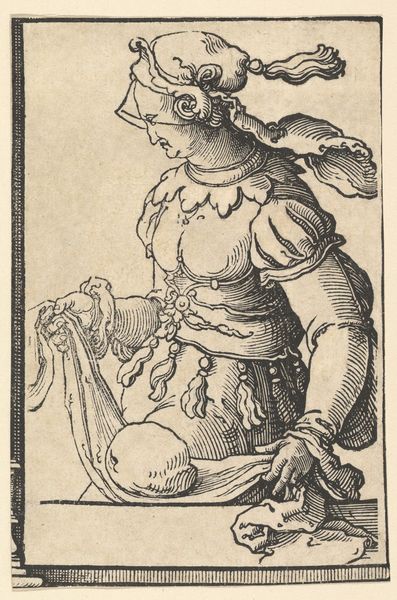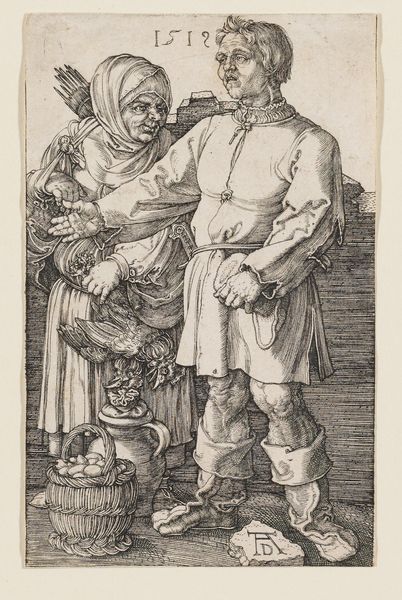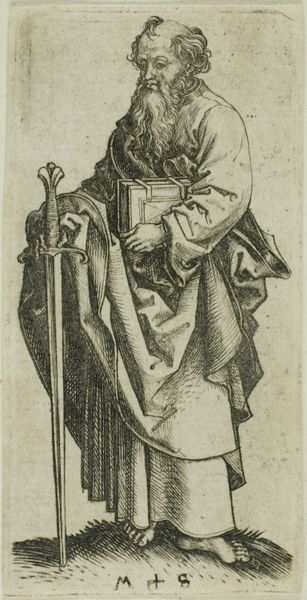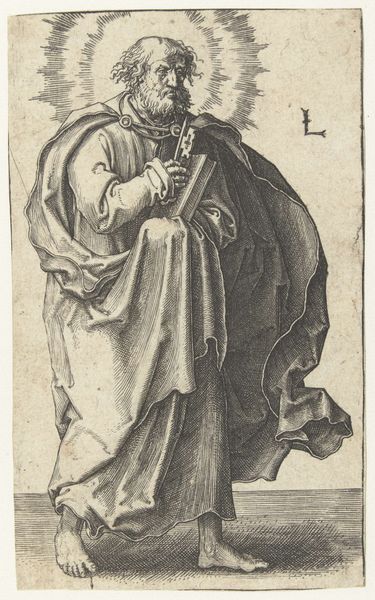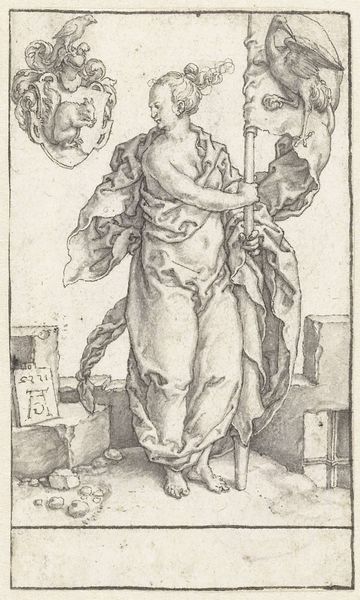
drawing, print, engraving
#
drawing
# print
#
landscape
#
figuration
#
form
#
line
#
genre-painting
#
history-painting
#
engraving
Dimensions: height 168 mm, width 103 mm
Copyright: Rijks Museum: Open Domain
Editor: We're looking at "Dwaze maagd met gedoofde olielamp in landschap," or "Foolish Virgin with a Snuffed-Out Oil Lamp in a Landscape," an engraving by Niklaus Manuel Deutsch from 1518. There's a somber quality to this piece; the figure's downward gaze and extinguished lamp seem laden with meaning. What do you see in this work? Curator: This engraving speaks volumes about the socio-political context of the Reformation. The "foolish virgin" is a direct reference to the biblical parable, but Deutsch uses her image to critique societal expectations of women and their roles. Is she foolish, or has she been failed by a system that demands constant vigilance and reserves no space for individual agency? Editor: That's fascinating. I hadn't considered it from a feminist perspective. What elements in the artwork suggest that interpretation? Curator: Look at the landscape. It’s not idyllic; it’s fraught with gnarled trees and foreboding clouds, mirroring the Virgin’s internal turmoil. Her very posture—shoulders slumped, gaze averted—defies the idealized images of women common in art then. And the snuffed lamp...what might that lamp stand for in a society that limited women's access to education or meaningful roles outside the domestic sphere? Whose fault is it that the lamp went out? Editor: It does make you question the narrative. So, it's not just a religious parable; it’s a commentary on the position of women during the Reformation. Curator: Precisely. By imbuing a biblical scene with such stark realism and placing the female figure in such a compromised position, Deutsch prompts viewers to interrogate the societal forces at play and, potentially, to question established patriarchal structures. Editor: I’m seeing this piece in a whole new light. It's much more complex and critical than I initially perceived. Curator: Exactly. Art allows us to have these conversations, traversing centuries, questioning and resisting assumptions that are historically ingrained and embedded in present structures. It’s work like this that reminds us to constantly reassess what we think we know.
Comments
No comments
Be the first to comment and join the conversation on the ultimate creative platform.
